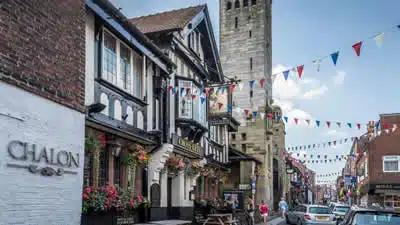There is always a temptation to visit the big towns. This small section looks at three small towns nearby, each with a different personality and each replete with its own quirky interest. Other little towns worth a close look are Delph and Dobcross in Saddleworth, north east of the city, Marple with its canal and locks east beyond Stockport and Lymm with a dam and lakes right in the town centre.
Knutsford
Let every dawn of morning be to you as the beginning of life and every setting sun be to you as its close – Ruskin Reading Room, Drury Lane, Knutsford.
Tourist Information Centre: 01565 632611
16 miles (25 km) south-west of the city on the A50. Direct train connections from Piccadilly Railway Station, or take Metrolink to Altrincham station and change to the train.
This prosperous town in north Cheshire is a gem. It is the embodiment of the lowland English market town with the added bonus of containing some of the most eccentric buildings in Britain. The town is grouped around King Street and Princess Street. On one side is the mere with a public area and children’s playground, on the other is Knutsford Heath, a large semi-natural common where famously in the 1997 General Election, Christine and Neil Hamilton confronted anti-sleaze candidate Martin Bell.
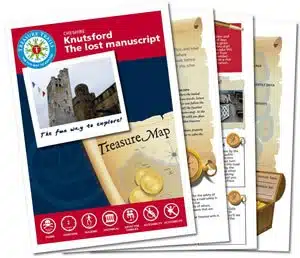
Knutsford is famous as Cranford, the town in the novel of the same name by C19 novelist Elizabeth Gaskell. Gaskell was brought up in the town and her grave lies in the cemetery of the simple but sweet Unitarian Brook Street Chapel. Every first Saturday in May, the May Day celebrations are held, the most genuine and charming carnival procession in the north west. There is a good heritage centre, just off King Street.
Middleton
A stubborn people with a wooden steeple – Middleton folk and their character apparently.
Tourist information: 01706 356592.
On A664 Rochdale Road, 5 miles (8 km) from the city centre. Nearest rail station to the town centre is at Mills Hill, a mile to the east.
The area around the Parish Church and Long Street, up from the dreary Arndale Shopping Centre, is a fascinating historical area. Like Knutsford, it contains work from one of Britain’s most exciting architectural practices from that fascinating era in design a hundred years ago. Unlike Knutsford, this little town, enmeshed in Manchester’s urban sprawl, is struggling to come to terms with the decline in the traditional industries. Fortunately its qualities shine through the changed circumstances.
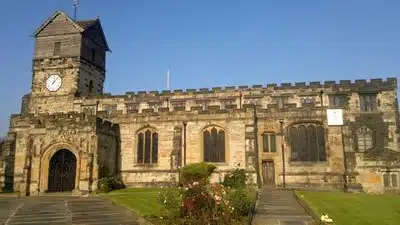
Thomas Langley, one of England’s greatest early politicians, recently burdened with the title ‘the first spin-doctor’, came from Middleton. He completed an early rebuilding of the church and rededicated it to St Leonard. Langley was Chancellor of England under three Kings and the Bishop of Durham from 1406.
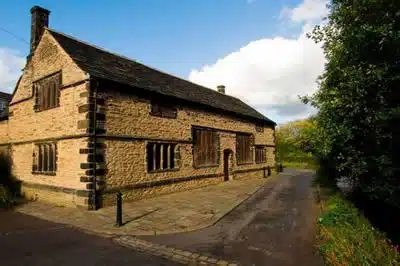
Ramsbottom
What’s Ramsbottom like? Wet and windy. Traditional music hall joke about the town.
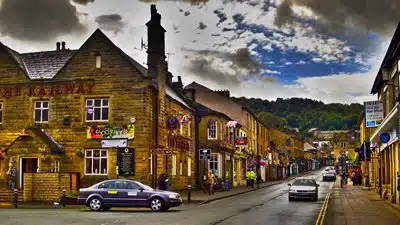
Tourist information: 0161 253 5111
The best way to visit Ramsbottom is via the East Lancs Railway on a weekend. Take the Metrolink to Bury and walk the quarter of a mile to the Bolton Street terminus of the heritage railway. The town lies on the A676 four miles north of Bury.
Ramsbottom may be less than 25 miles (40 km) as the crow flies from Knutsford but it is totally opposite in character – apart from a shared affluence. This is a no-nonsense stone built Pennine hill town. The roads out of the town east and west are impossibly steep. In the Market Place is the Grant Arms, which commemorates the chief bigwigs of C19, the Grants, who Charles Dickens immortalised as the Cherryble brothers in Nicholas Nickleby. These generally philantrophic mill owners made sure of the profits of their pub by paying their workforce in tokens that they could only redeem in the Grant Arms, part of their wage had then to be redeemed in drink.
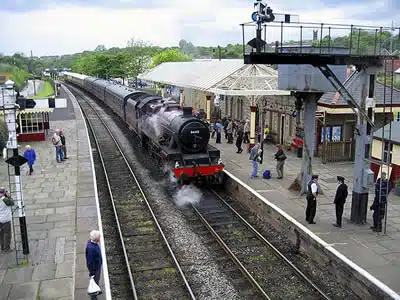
At the other end of the scale, this tiny town has one of the best independent restaurants in the region, called Ramsons. Located in the Market Place, all their food and drink is organic. A very steep but very pleasant walk, west up Tanners Street and then the Rake leads to lovely Holcombe Village and good food and drink at the Shoulder of Mutton pub. A further climb takes the visitor to the Peel Monument on Holcombe Moor. Even from the foot of the 39 metre tower there are spectacular views over Manchester to North Wales. Access to the tower is limited to certain days (call the Tourist Information). The tower was erected in 1852 in memory of Sir Robert Peel, the Bury-born PM, founder of the modern police force and repealer of the Corn Laws.
More Information
If you would enjoyed this guide, why not take a look at some more Manchester attractions and events in our other Manchester tourism and travel information guides.

